How to import your certificate to the browser and
save a back-up copy
This user guide has been prepared using Mozilla Firefox. The screenshots and other details may differ if you use another version of the browser.
After you picked up/ retrieved and saved the WIPO Customer CA digital certificate, please follow the steps below to import it into the Mozilla Firefox browser in order to access ePCT with strong authentication.
1. Open Mozilla Firefox.
- If you use Windows, click Tools in the menu bar or click Open Application Menu icon
 at the upper right corner > go to Settings > select Privacy & Security from the left-hand menu > scroll down to Security > under Certificates, click View Certificates.
at the upper right corner > go to Settings > select Privacy & Security from the left-hand menu > scroll down to Security > under Certificates, click View Certificates.
- If you use Mac OS X, select Firefox > Preferences from the Firefox Menu Bar at the top of the browser or click on the Open menu icon
 at the upper right corner to go to Preferences; then click Preferences and select Privacy & Security from the left-hand menu, scroll down to the bottom, the Certificates tab and finally the View Certificates button.
at the upper right corner to go to Preferences; then click Preferences and select Privacy & Security from the left-hand menu, scroll down to the bottom, the Certificates tab and finally the View Certificates button.
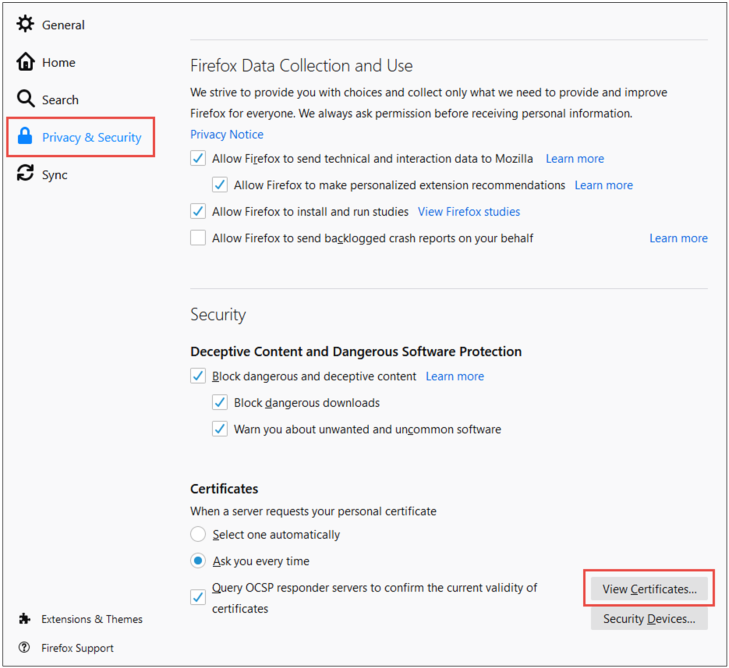
2. Click Your Certificates tab > click Import.
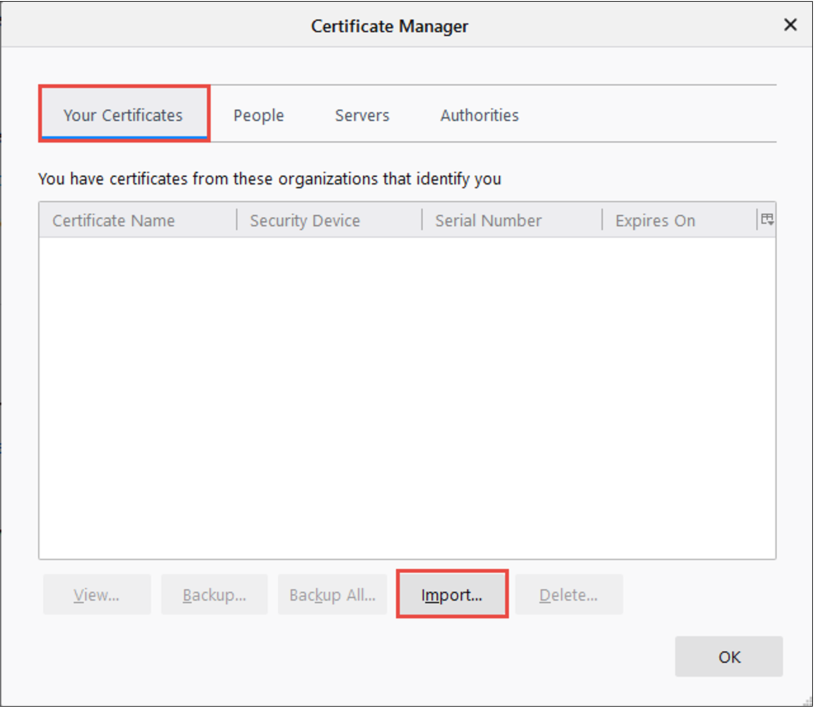
3. Browse to the location where your certificate file is stored. If you don’t remember the location of the certificate, search for files with the extension .p12 (Back-up copy made with Mozilla Firefox) or .pfx (Back-up copy made with Internet explorer).
Select the file and click Open.
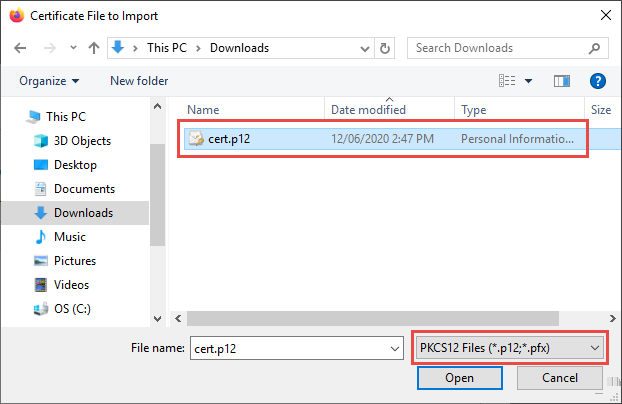
4. Enter the default password given in step 1 that you noted down when you downloaded your certificate. See step 4 of How to pick up your certificate: Mozilla Firefox.
Then click OK.
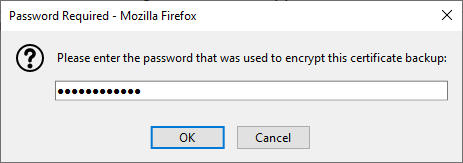
5. Your digital certificate is now visible in the Firefox certificates list and ready for use. Click OK to finish the import.
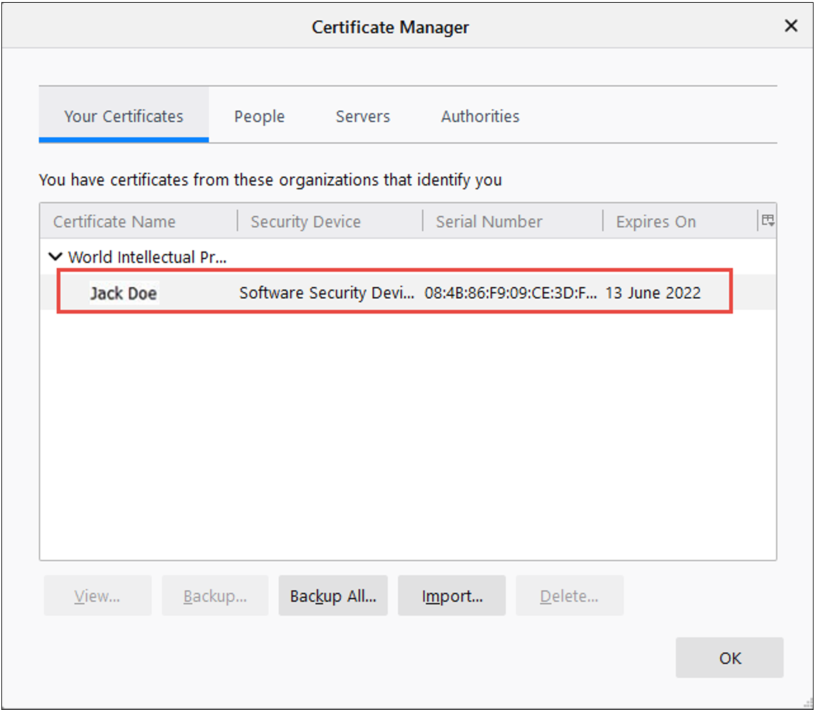
To save a back-up copy of the certificate and create a new password:
After your certificate has been imported in the Mozilla Firefox, you can save a back-up copy of the certificate and create a password which is different with the default one and easier for you to remember. In addition to import the certificate into your internet browser after the pick-up/ retrieval, there may be a number of reasons for importing a copy of a WIPO Customer CA digital certificate, e.g. for enabling access to ePCT after a computer or a browser change or upgrade.
6. Select the certificate on the Certificate Manager window, click Backup. Refer to the Step 1 above to find the certificate in your bowser if needed.
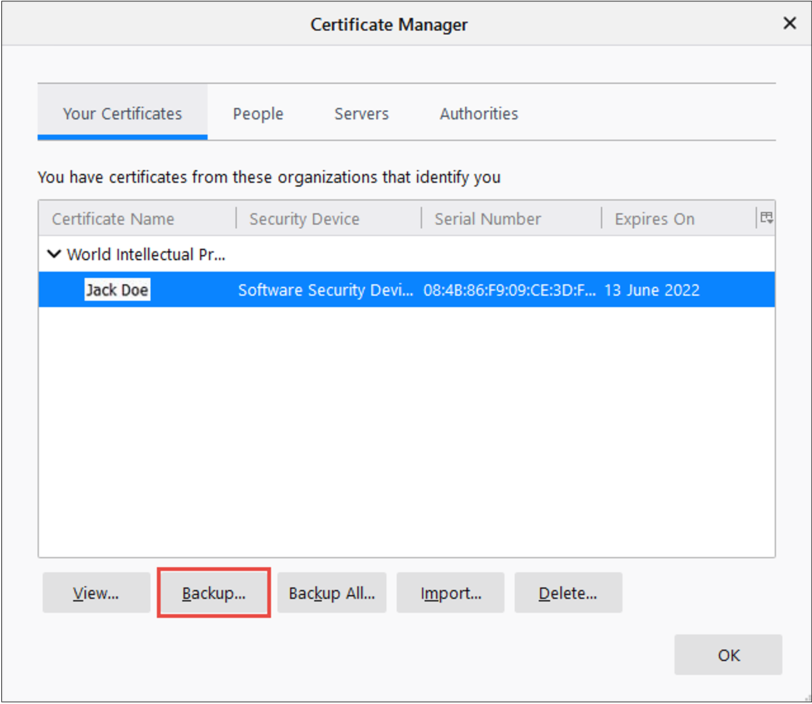
7. Choose a location to save the back-up copy of your certificate. Provide a name for your certificate (e.g. MyWIPOCert); the file extension (.p12) will be added automatically. Type a name for the back-up copy and click Save.
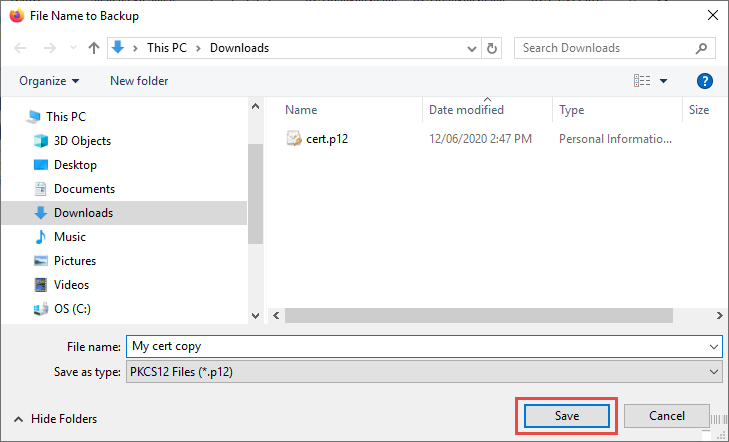
8. Create the password of the back-up copy and click OK.
This password is required when you import the certificate into a different browser or when re-importing the certificate after a browser upgrade.
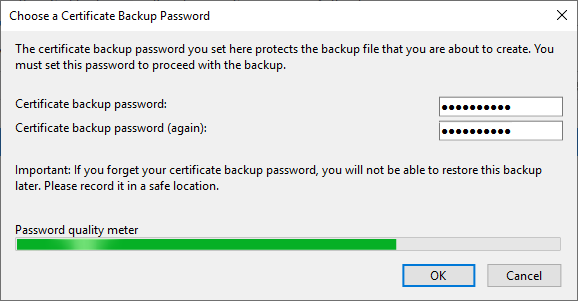
The back-up copy is now stored and can be copied and used on other devices. It also serves as a back-up in case of a computer or a browser change or upgrade when you may need to import the certificate. It is also recommended to send your certificate to yourself by email in order to always keep a copy outside of your computer.